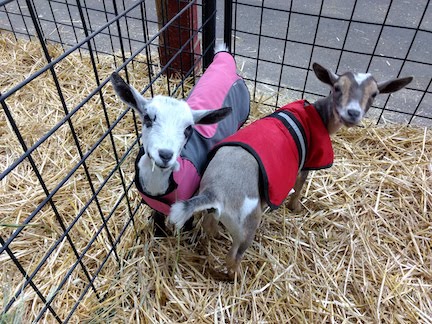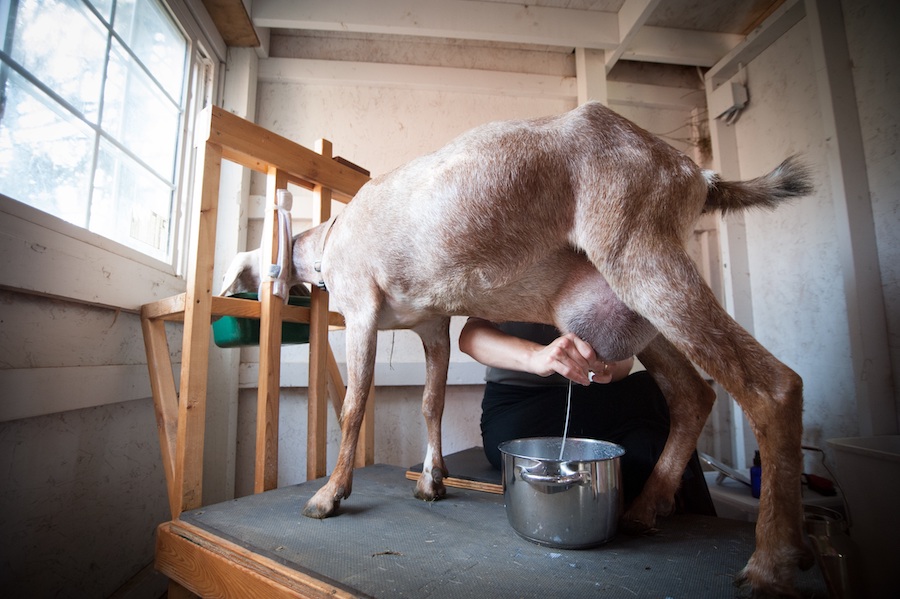By Jacki Martinez Perkins
Spring and summer keep the world awash in new life and possibility. One of the cuter examples of this comes in the form of goat kids. These precocious little jumping beans often elicit laughter and curses in equal measure. While their dams are often more pacific in nature, they still require special management unique to their physiology and personality.

Infrastructure Considerations
Most importantly, keeping goats dry and out of drafts will save heartache on the part of the animals and the manager. A cold, wet goat is a sick goat; keep your goats in coats when the weather falls below freezing. Summertime protection can be as simple as a portable shade area with at least two walls to allow goats relief from prevailing winds. Further decisions need to be made around milking infrastructure in relation to pasture and time management.
Milking Dairy Goats
Anytime we handle raw dairy it is worth a little extra scrutiny of our handling and cooling systems, especially in the heat of the summer. Keeping an ice bath on hand to kickstart cooling of fresh milk helps to mitigate bacterial growth. If we’re choosing to hand milk our goats, thoroughly washing hands and udders with mild soap and warm water, then drying with clean terry cloth towels, reduces the chance of an intramammary infection known as mastitis. Any machine milking equipment should be regularly inspected for cracks in rubber pieces, or buildup of milk scale, as these things inevitably affect the quality and shelf life of milk and milk products.

Goat milk is naturally homogenized and will not separate the same way cow milk does. For some individuals these smaller fat globules make goat milk much easier to digest. Additionally, all goat milk is made up of A2A2 beta-casein proteins, furthering its digestibility. None of this means that goat milk is lactose free, so for those individuals whose small intestine retired from lactase production long ago, fear not: your ability to clear a room after enjoying some tasty goat’s milk ice cream this summer is still intact.
Goats for Agritourism
Along with goat kids and bountiful supplies of milk, summer in Maine means an influx of tourists. Agrotourism can be a smart financial opportunity for livestock producers, especially those managing a full herd of weanling kids. Precious petting opportunities abound when customers visit the farm stand to buy products and interact with their farmer. However, being fully cognizant of both biosecurity measures and dietary considerations may dictate availability of schedules and infrastructure changes to accommodate customers wishing to interact with the livestock. For instance, installing sanitizing mats in areas where visitors must pass through in order to gain access to livestock can help reduce the risk of pathogens entering your herd. Supplying grain in coin-operated dispensers coupled with rotations of goat kid groups can keep visitors from feeding potentially harmful forage items to your herd, while helping to ensure the more bashful members of the herd get a bit of extra energy.
Jacki Martinez Perkins is MOFGA’s organic dairy and livestock specialist. You can contact her at [email protected].
This article was originally published in the summer 2022 issue of The Maine Organic Farmer & Gardener.
